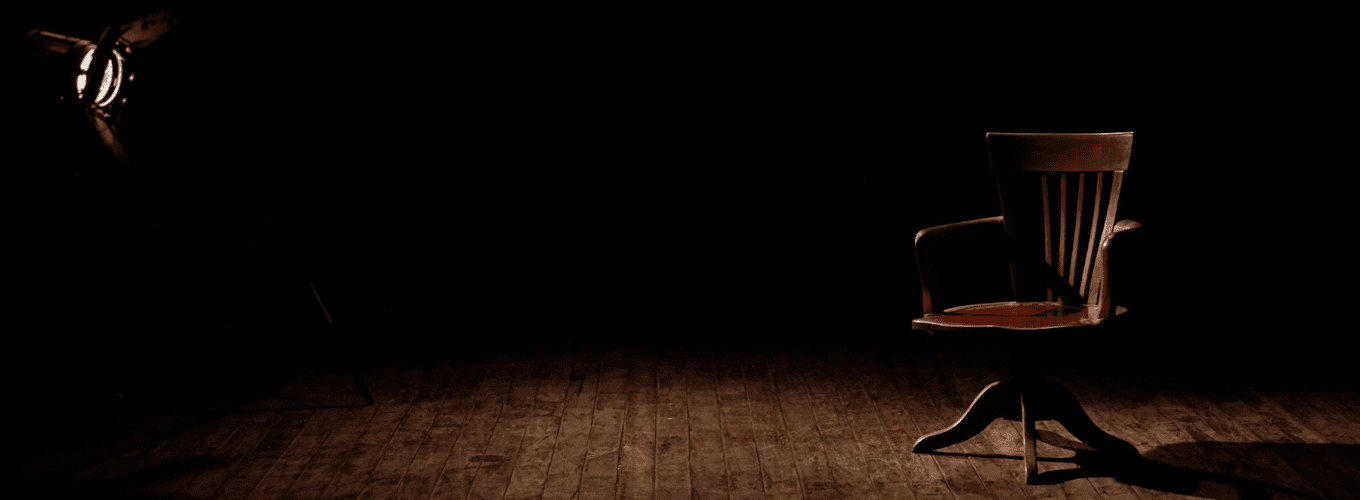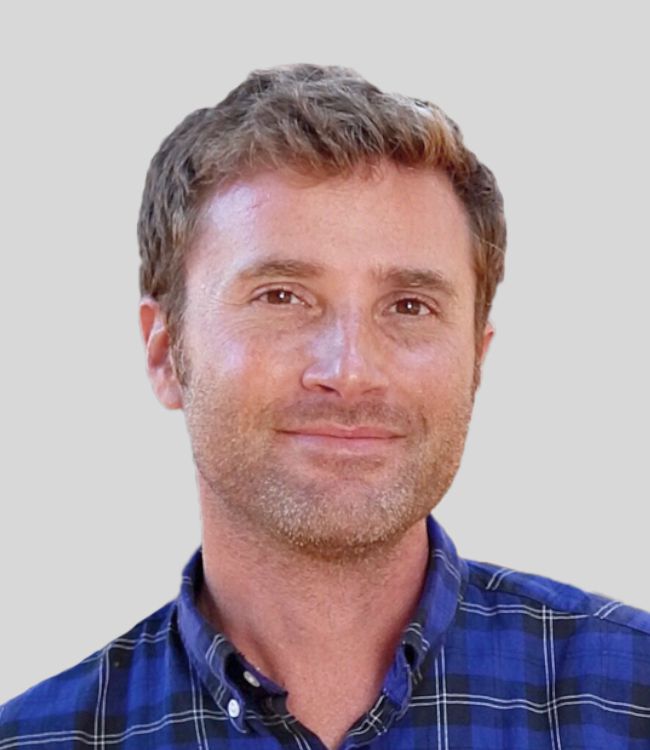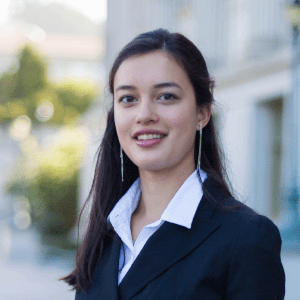
Speaker Spotlight: Noah Whiteman
Undergraduate science communication intern Mira Cheng sits down with speakers from the weekly IGI Seminar Series to discuss their innovations, motivations, and eclectic hobbies.
Dr. Noah Whiteman is an Associate Professor in the Department of Integrative Biology at UC Berkeley. I interviewed Dr. Whiteman when he spoke at the IGI on February 4th, 2020. An abridged version of our conversation appears below.
MC: Could you please tell me a little bit about your journey in becoming a scientist?

NW: “I grew up in a very rural part of Minnesota, along Lake Superior. It’s very isolated and very beautiful. We lived in the middle of nowhere, so I was left to my own devices in the wilderness as my own source of entertainment. I spent a lot of time by myself. My dad was a naturalist, we hunted and fished, he was an outdoorsman and that’s kind of how I got into it. I had no idea I could be a scientist, my parents didn’t go to college—I was a first-generation college graduate. I applied to exactly three colleges because my high school guidance counselor gave me [those three] names. Coming from such a tiny place, it was a good step: I went [to] a small college in Minnesota run by Benedictine monks.
It was hard though, I was surrounded by people who had gone to prep schools and things like that, so I was way behind. One thing I did have [though] was this natural history, kind of an innate ability that I took for granted, but that became useful. When I was a junior, I took an entomology class and the professor taught us about the dance language of honeybees—[their] ability to learn and [their] complex spatial memories. And I thought, ‘Wow, how did that evolve? How could that evolve?’ I was hooked. I started down the road of academia, but it was difficult [because] I didn’t know anyone who’d gone to graduate school except my professors, and I didn’t get in anywhere except for one place, so that’s where I went. I got a master’s degree in entomology at the University of Missouri, and then did a Ph.D. at the St. Louis campus of the University of Missouri because that was the first offer I got, and I just accepted it. I was very naive about what I was doing. I eventually went to Harvard to do a postdoc and then I kind of got on track and have [continued in] academia ever since.”
MC: Who were your role models throughout this journey?
NW: “My first role models were the professors at my small liberal arts college, who were wonderful humans and took me under their wings. They knew I was first-generation, they accepted me with open arms and were super welcoming. They were my role models and then of course my master’s advisor, Robert Sites, was an excellent, conscientious scientist and entomologist. My Ph.D. advisor was Patricia Parker, and I was her first student to work on disease ecology and evolution in Galapagos birds. She kind of saved me because I was about to quit academia. I was coming out of the closet, I started in a lab that I knew wasn’t going to work—and I thought, I don’t know what to do. [Parker] and Toby Kellogg, the Director of Graduate Studies at the time, kind of put me under their wing. Patty said, ‘Why don’t you come to the Galapagos and just help out in the summer, think about evolution, and help us catch birds?’ So that was the launching point for my later host-parasite work.”
MC: What is the hardest challenge that you’ve had to overcome in the journey to where you are today as a scientist?
NW: “I think the single biggest one is self-doubt. When I was younger, I think the challenge was being the first in my family to pursue academia, and especially a field that is very esoteric. My loving relatives would ask, ‘What are you doing? When are you going to get a job?’ I second-guessed myself a lot because of that. I don’t think they meant any harm, but I saw it as a lack of support, and that was hard because I often felt isolated. So I think self-doubt creeps in throughout my career as I look back at different stages. ‘Can I do this? Am I good enough? Do I belong here?’”
MC: What do you hope to achieve with the project you presented today in the seminar lecture?
NW: “For me, there’s never an end goal. It’s the process of discovery that is the point. What we wanted to do here was to try to retrace an adaptive walk that has been repeatedly taken by insects that eat the same plant, but that are unrelated to each other. [We wanted to] ask if you can predict the steps that evolution takes. That might help us understand why those particular steps are taken: if they are repeatedly taken, what’s special about them? I think we did address and resolve that, at least some of the answers, but I think there are more questions. These steps do ameliorate some of the costs of the adaptive mutations, but not all of the costs, so there are other mutations probably responsible for compensating. There’s a postdoc in my lab who is continuing along some of these lines and will take the project with her when she leaves the lab. For me, when I think about what’s next, we are interested in thinking about how the monarch itself deals with this toxin. There is potential for an evolutionary strategy out there in this very large population of butterflies, called automimicry—to me that’s kind of a fascinating question.”
MC: Where do you see your field in ten years?
NW: “On one hand, I think that evolutionary biology finds itself in a gilded age, but you have to wonder if people have always thought that. I do see a problem. We’re not having trouble finding patterns in the genomes—whether it’s at the population level or between species—that are interesting candidates for the genetic basis of adaptation. [However], I think a horizon goal is to further test hypotheses of adaptation across all levels of biological organization, and integrate our understanding of adaptive evolution across the layers of phenotype, down to the genotype. And that’s very hard to do; that is a frontier. Are there general rules that evolution follows? I think a lot of people would say ‘yes,’ and then a lot of people would say ‘no.’ Depends on the scale, the level of the question. How do we link variation in genotype, variation in phenotype, and variation in fitness in a way that’s more than just a simple circle?”
MC: Why do you find it important to emphasize diversity in your lab?
NW: “Well I think it’s important in general, regardless of one’s own background, because we want science to include as many people as possible so that we have retained talent for the future. That’s a very mechanistic kind of way of thinking about it. The other thing is of course there’s a human obligation. Our country is based on the principles of fundamental fairness and equality and that is a goal that has been very imperfect in terms of our ability to achieve it. So there’s a workforce obligation, there’s an ethical obligation, but then for me it’s very personal. I’m out and gay, and because of that I think [my lab] tends to attract people from minoritized backgrounds. I actively encourage that on my website, I advertise that we’re a welcoming lab.
The other spin off that is a positive feature of having a diverse lab, is that the science is way different. Most of the things that we care about and think are positive qualities in terms of innovation, improve with increasing dimensions of human diversity in an organization. The creative output, in my mind, is stronger as a result of having such a diverse group of people collaborating. It’s sometimes incredibly hard to manage—all of these walks of life from different countries, places, perspectives. But I love that about my job and I think, as someone who studies variation, it has only been good for me personally as a scientist to have a diverse lab.
I [also] serve as a role model; that’s the other part, that’s the reason I talk about being gay. In some ways, the last thing I want to do is talk about my personal life, but at the same time if I don’t do it, then how will [people] know that you can be gay and not have it really negatively affect your career, or any aspect of the of your background that you might worry about? For me, I think it’s a fundamental goal to increase retention of students from diverse backgrounds. We have an obligation to make sure that the people who are here, leading the campus at every level, especially at the faculty level, are representative of the people they’re teaching.”
MC: What is your favorite species that you have studied and why?
NW: “I have to say, working [with] and holding over 200 hawks, giant birds of prey—that is a transformational experience. Holding a bird that was trying to kill [you] a moment before, trying to hit you in the head, and then it’s looking at you, intently with its eyes that you know are able to focus light on different parts of their retina at the same time. And then going back four years later, [to find] some of the birds in the same place, that’s pretty rewarding. Working with those birds was a highlight of my life, really.”
MC: What is something that you do a lot that people wouldn’t necessarily expect?
NW: “I like to run. I try to run at least once a week, 10 miles. That’s something that I do by myself and I really enjoy that. The other thing [is that] I really like airplanes and so I spend a lot of time reading about them and understanding their engineering.”
MC: If you could describe yourself in three words, what would they be?
NW: “Unafraid, naturalist, uncle.”
MC: If you could listen to a conversation between any two people (past or present), who would they be?
NW: “Charles Darwin and Miriam Rothschild. And then [myself in conversation with] my great-grandfather, who came to the U.S. after escaping the pogroms in Russia.”
MC: What advice would you give your younger self?
NW: “To remember that I’m resilient, and to be less afraid.”
 By
Mira Cheng
By
Mira Cheng